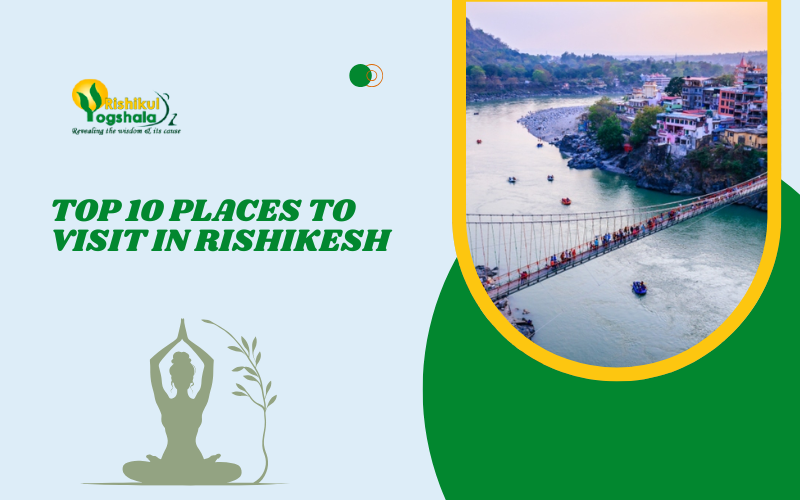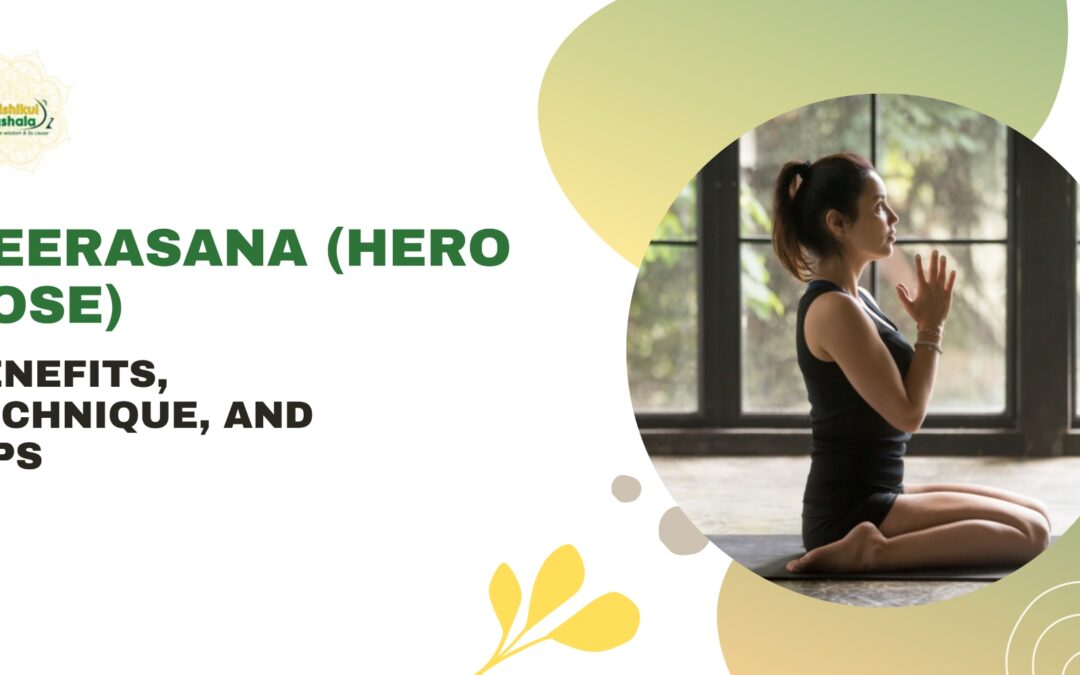200 Hour Yoga Teacher Training in Rishikesh
Rishikesh is the best place for yoga all year because of its rich history and spiritual energy, which is hard to explain but easy to feel. With the peaceful Ganga flowing in front and the quiet Himalayas standing behind, this peaceful setting is ideal for new practitioners to begin their Yoga journey.
This city is located in the lower Himalayan region, in the north Indian state of Uttarakhand. Like other places in the north Indian region, cities get very hot in the summer and pretty cold in the winter. So, the best time to start Yoga Teacher Training in Rishikesh depends on the kind of weather you like or can handle easily.
If you plan to join YTTC only in Rishikesh and not in the other cities, the best time to go is from February to April. The weather is a bit cold in February, but still comfortable. However, summer gets much hotter than in most European or other foreign countries. You might stay indoors with the AC on all the time, making it hard to practice yoga with focus.
So here are the details of Rishikesh’s weather. It includes the usual temperatures, the weather, and the good and not-so-good things about visiting during that time. This will help you choose the best time for your trip, whether you want to practice yoga, explore, or relax.
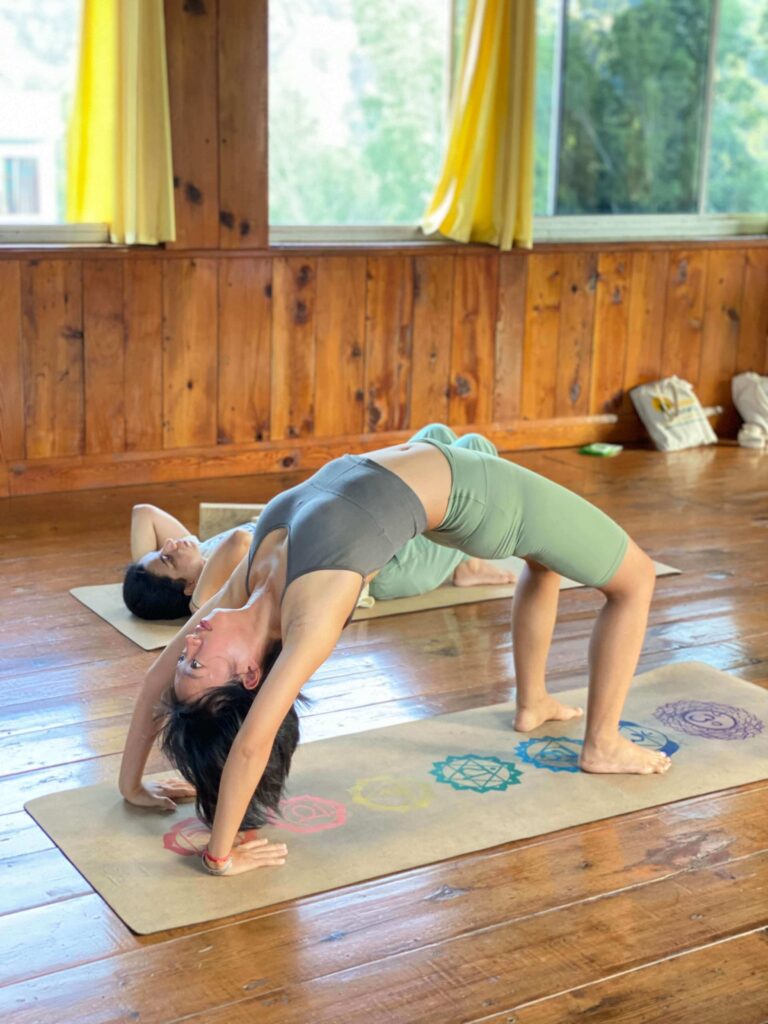
Rishikesh in Winters (October to February)
- Temperature: Rishikesh is the best place for yoga all year, but because of its location, the Winter season is the most suitable. During winter, Rishikesh stays cool and comfortable, with temperatures ranging between 8°C and 34°C. The days are soothing, and the evenings are cold. If you come from the coldest country, you will find the weather normal and ideal for doing yoga and enjoying the place’s natural beauty.
- Winter Weather: Winter is one of the best seasons for yoga teacher training in Rishikesh. The air is crisp and fresh, perfect for deep breathing practices and meditation. The cool weather creates a peaceful, calm atmosphere—ideal for learning, reflection, and connecting with your practice. You can fully enjoy your classes and the natural surroundings with the right warm clothes.
- Great Time for Yoga Training: The cool weather helps you stay fresh and focused during long hours of yoga training, especially when doing physical postures (asanas).
- Seasonal Comfort: One of the other reason to call winter weather the best is becouse it is a great time to enjoy cosy moments, local winter foods, and calm walks through the forests and ghats.
Things to Know for Winter Weather in Rishikesh.
- Winter is popular, so many people visit during this season. Booking your yoga school, accommodation, and travel in advance is a good idea to avoid high prices or limited availability.
- Plenty of winter markets also exist, so leave a little space in your bag for warm clothes or local shopping.
Tips for Yoga Trainees in Winter:
- Pack warm clothes like woollen layers, socks, and a good winter jacket.
- Bring comfortable shoes—especially if your school offers nature walks or light trekking.
- A windcheater, torch, and water bottle are helpful for outdoor activities or early morning classes.
- Don’t forget moisturiser, lip balm, mosquito repellent, and any essential medicines.
Carry a yoga mat, notebook, and any personal items that help you feel grounded during your stay.
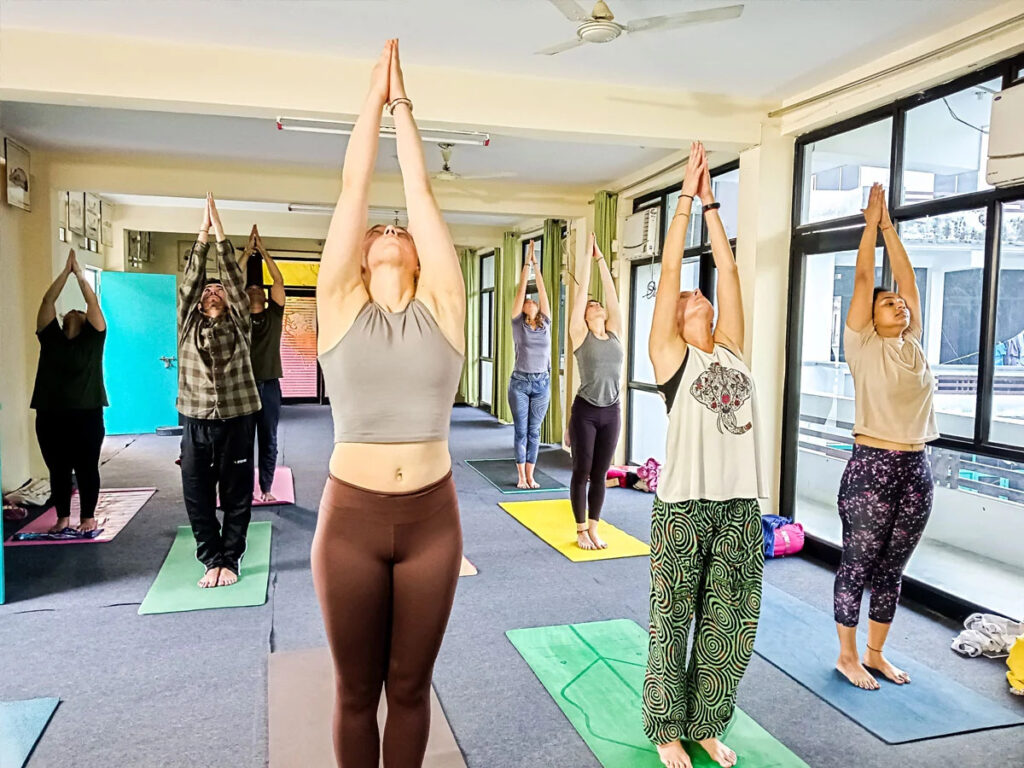
Rishikesh in Summer (March to May)
- Temperature: These months are extremely hot, and if you are coming from a cold place like Russia or Canada, you might not be able to tolerate the weather. The air temperature during summer varies between 14°C and 39°C.
- Weather: In summer, Rishikesh’s weather can be described as hot and humid, interspersed with bursts of scorching heat. Due to its geographic location, the city’s summers can be particularly draining and exhausting. Warm winds and moisture in the air can make it rather sticky. Comfortable weather is essential for practising long hours of yoga exercise so that practitioners can focus and connect with their minds. So, it could be challenging for the Yoga teacher to train students to learn and practice yoga with complete focus.
- Impact: While Rishikesh is a beautiful place for yoga, summers here can be quite intense. The heat during the day can get uncomfortable, especially for those not used to high temperatures. Another challenge during summer in Rishikesh is the electricity supply. Power cuts can happen, especially when the demand is high. If you’re staying at a yoga school that doesn’t have a backup system like a generator or inverter, it can get uncomfortable, especially during hot days or nights without fans or air conditioning. This can affect your rest, focus, and overall experience during training. It’s a good idea to check in advance if your school has proper backup facilities to ensure a smoother and more comfortable stay.
Why You Should Visit Now
Rishikesh is the world’s Yoga capital and one of the most sacred Hindu pilgrimage “chaar dham” ways too! There are some famous temples like Badrinath and Kedarnath in Uttarakhand, which are located near Rishikesh city and open only in the summertime.
Visiting them can be a life-changing spiritual experience. Possibly one of the best spiritual experiences is participating in the Ganga Arti, which occurs at 5 pm each day. Specifically for those who dislike the chill, summer is ideal for learning about the city’s spiritual roots.
Things to Know Before the Visit
Despite summer’s challenges, this season in Rishikesh offers a unique opportunity for inner growth. In yogic philosophy, discomfort is often seen as a teacher. Training during this time invites you to build discipline, patience, and resilience, both physically and mentally and emotionally. Summer in Rishikesh, for those open to it, becomes not just training but a journey inward.
Tips for Yoga Trainees in Summer:
- Pack light, summer-friendly, airy clothing, as summer can get humid. Keep a cardigan or shrug, which may be handy at some point.
- Don’t forget that SPF+ sunscreen is necessary because some yoga practice is performed in places where you are in direct contact with the sun.
- A 1-litre water bottle is your best companion in this journey to keep you hydrated throughout the day.
- Almost all schools have yoga equipment like yoga mats, belts, and ropes, but because of the humidity, it could be possible that they are not hygienic, so take your necessary equipment.
- Lastly, make sure you eat well and get a sufficient night’s rest.
Monsoon Season (June to September)
- Temperature: These months mark the start of the monsoon season in Rishikesh, bringing moderate to heavy rainfall. The average temperature stays between 24°C and 34°C.
- Weather: Nature blooms with greenery and pleasant temperatures. The monsoon brings a welcome shift, wrapping the region in an incredible, breezy charm that makes everything feel fresh and alive and helps you connect with yourself.
- Significance: Although the monsoon season is a low-yoga student season due to the obvious risks associated with the monsoon season, you can often find yoga courses at lower prices. Most yoga institutions are shut during this time, but teachers’ training courses are available. You can even take other hobby classes.
Why You Should Visit Now
Rishikesh in the monsoon is not only beautiful but also a great time for yoga training. The cooler weather makes it more comfortable to practice, especially compared to the hot summer months. The sound of rain, the fresh air, and the peaceful surroundings help you feel calmer and more focused.
International Yoga Day, the 21st of June, occurs during this season, and India celebrates it with an open heart to make one’s experience extraordinary. Many national-level yoga events are planned during this time, where you can see the power of yoga and its significance closely.
Things to Know Before the Visit
The monsoon season offers a unique advantage for those focusing on yoga training. With fewer tourists and a calm and peaceful atmosphere, it’s an ideal time to deepen your practice and connect with yourself. Accommodation is also more affordable, making it easier to focus on your training.
However, if you want to explore Rishikesh further and experience its adventure activities, like river rafting, parasailing, paragliding, bungee jumping, and trekking, the monsoon might not be the best time. Due to heavy rainfall and high tides, these activities are inaccessible, and landslides can cause road blockages. If adventure is on your mind, it’s better to plan your visit for another season. But for yoga, the monsoon season is perfect.
Extra Tips for Yoga Trainees in Monsoon
The monsoon season can be quite challenging because the hills, landslides, and road blockages can make it hard to stay connected. It’s a good idea to keep a few important things with you, like a power bank, to ensure your devices stay charged. Also, put emergency contact in written form in case communication becomes difficult. Be prepared for unrelenting rains and strong winds. As such, you must carry an umbrella, a windcheater, and a waterproof bag. Ensure your footwear is sturdy and your clothes are light. Keep all your electronic gadgets safe. Lastly, avoid embarking on treks and trails of your own, as this could be too dangerous.
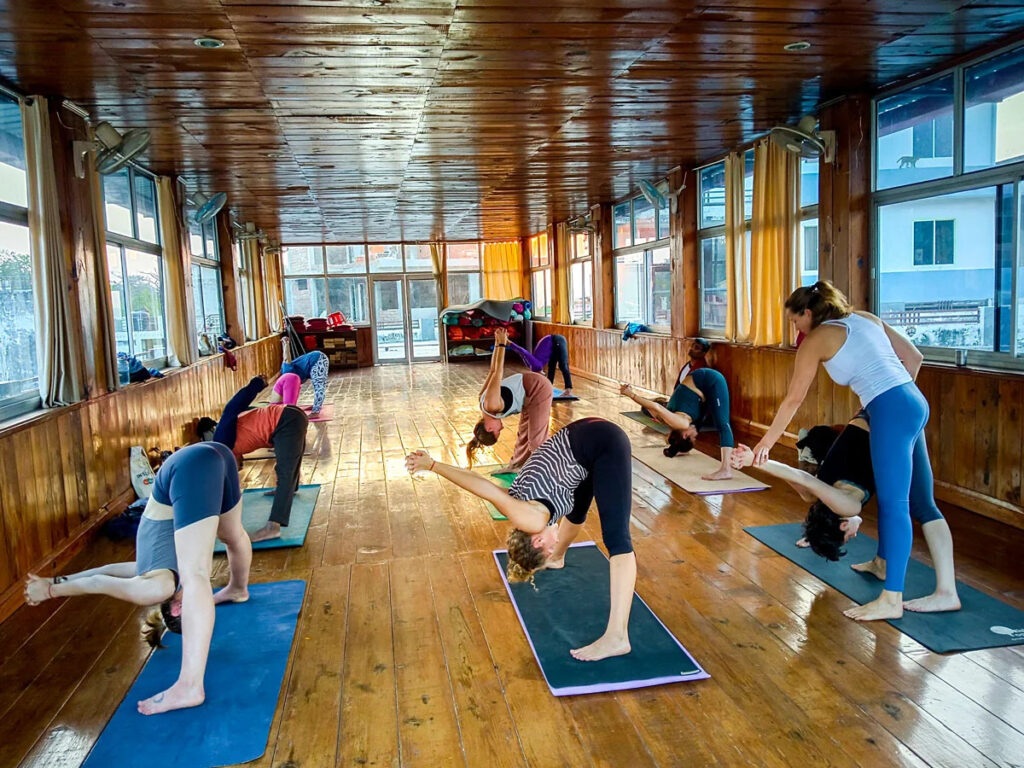
Read More – 10 Things To Do After Completing Our 200 Hour Yoga Teacher Training in Rishikesh?
Conclusion
India is a unique country where you can experience all kinds of weather in the same city. Each season has something beautiful to offer, but comes with a few challenges. Whether it’s the cool winter, fresh spring, hot summer, or rainy monsoon. Every season can change the way you experience your Yoga Teacher Training, in both good and difficult ways.
That’s why it’s important to plan wisely. If you understand what each season is like, you can choose the best time for your training based on what suits you. With the right planning, your yoga journey can be peaceful, powerful, and a truly life-changing experience.
If you are a new practitioner and want to begin your Yoga teacher training journey, you can start by taking a basic 200 hour yoga TTC at Rishikul Yogshala, Rishikesh. The course covers all the fundamental topics, including yoga postures, history, anatomy, and physiology of yoga.



